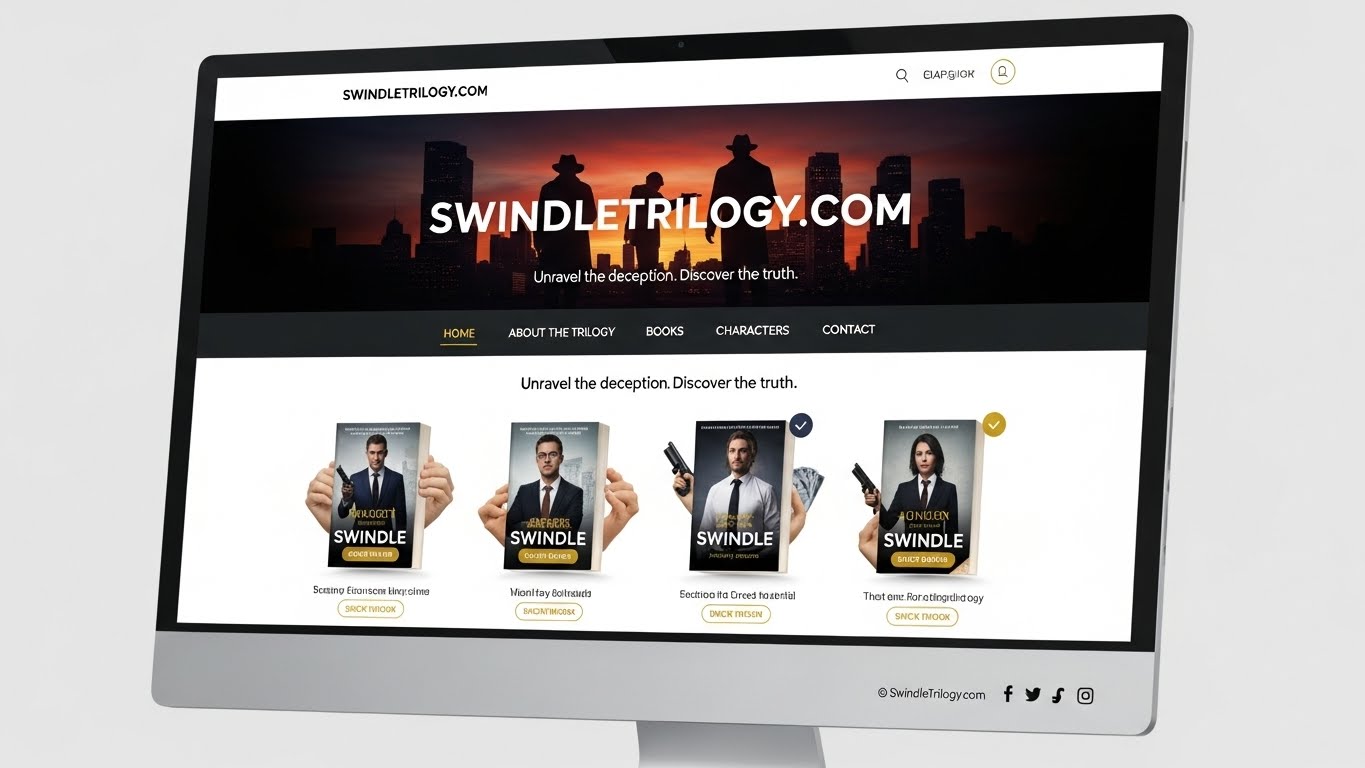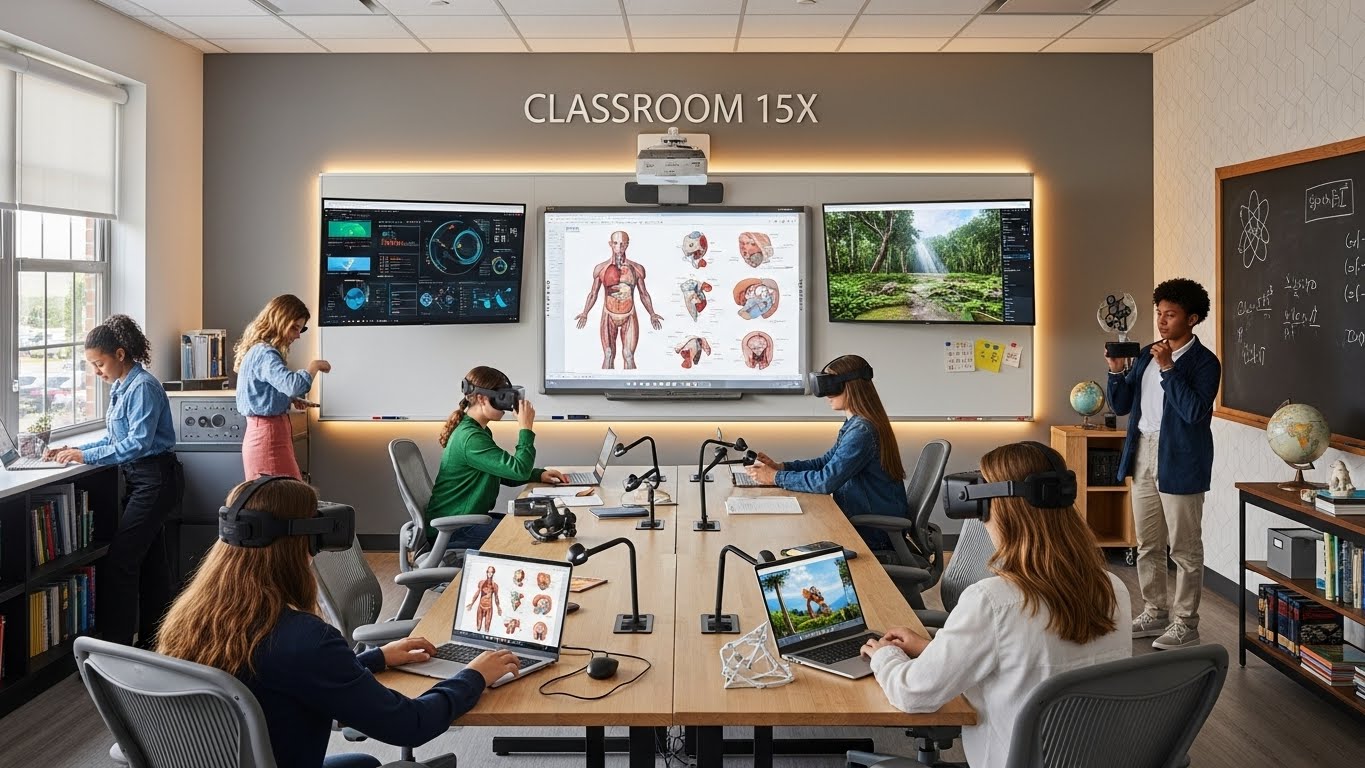Archives
Polls: What Today’s Surveys Reveal About Public Opinion

Polls today are more than just a snapshot of public opinion; they’re windows into the collective psyche of society. From political elections to social issues, surveys capture what people think, feel, and believe at any given moment. But have you ever wondered how these polls come together? What do they tell us about ourselves?
In an era where information travels faster than ever before, understanding the art and science behind polling is essential. Let’s dive deep into the fascinating world of surveys—exploring their historical significance, methods used for data collection, and the challenges faced in accurately reflecting public sentiment. With each statistic comes a story—let’s uncover what those stories reveal about us today.
Historical Significance of Polls
Polls have played a pivotal role in shaping political landscapes throughout history. Their origins can be traced back to the early 20th century when methods for gauging public opinion began to evolve.
The famous Literary Digest poll of 1936, however, marked a turning point. It famously predicted a landslide victory for Alf Landon over Franklin D. Roosevelt, which completely missed the mark. This failure highlighted crucial flaws in sampling techniques and set the stage for more robust methodologies.
As technology advanced, so did polling tactics. The introduction of telephone surveys and later online polls transformed how data was collected and analyzed. These innovations allowed for quicker responses and broader reach.
Polling has not only influenced elections but also provided insight into social issues like civil rights, healthcare, and education reform over decades. Understanding historical significance helps us appreciate the complexities involved in measuring public sentiment today.
The Methods of Conducting Surveys
Surveys can be conducted in various ways, each with its unique strengths and weaknesses. Traditional methods like telephone interviews have long been a staple. They allow for real-time interaction but may miss younger demographics who favor text or online communication.
Online surveys are rapidly gaining popularity. They provide convenience and scalability, reaching a global audience within minutes. However, response rates can vary dramatically across different platforms.
Face-to-face surveys offer rich qualitative data but require more time and resources to execute. Interviewers can gauge body language and emotional responses, adding depth to the findings.
Mail-in questionnaires still exist despite their decline in usage. While they may seem outdated, some populations prefer this method due to privacy concerns or limited internet access.
Each technique needs careful consideration based on target demographics and research goals. The choice of method directly influences the reliability of public opinion captured by polls today.
Challenges in Accurately Representing Public Opinion
Accurately capturing public opinion is far from straightforward. One significant challenge lies in the diversity of voices. Different demographics often hold varying perspectives, making it difficult to represent a unified view.
Sampling bias can skew results as well. When certain groups are underrepresented, the data may misrepresent the broader population’s sentiment. This creates gaps in understanding and leads to flawed conclusions.
Moreover, respondent fatigue plays a role. People might rush through surveys or provide socially desirable answers rather than their true feelings. This undermines the authenticity of responses.
Time constraints also limit how questions are framed and understood by participants. The complexity of an issue cannot always be captured in simple survey formats, leading to oversimplified interpretations of nuanced opinions.
Rapid changes in public sentiment complicate matters further—what people feel today might not reflect their views tomorrow.
Controversies Surrounding Polls
Polls today often spark heated debates. Critics argue that many polls are biased, leading to skewed results. The selection of participants plays a crucial role in shaping opinions.
Another point of contention is the timing of surveys. Conducting polls during key events can significantly influence public perception. Responses may reflect immediate emotions rather than well-considered views.
Moreover, some question the reliability of online polling methods. With the rise of mobile devices and social media, reaching diverse demographics has become both easier and more challenging.
Media outlets sometimes amplify selected findings without providing context, which can misinform audiences about prevalent opinions. This selective reporting fuels distrust in polling data.
As technology evolves, so do techniques used by pollsters. While innovation offers new insights, it also raises concerns about privacy and transparency in how data is collected and analyzed.
Impact of Social Media on Polling
Social media has transformed the way we approach polls today. Platforms like Twitter, Facebook, and Instagram allow for instant feedback from a vast audience. This immediacy offers insights that traditional polling methods simply can’t match.
However, it also raises questions about accuracy. The demographic skew of social media users often means certain voices dominate the conversation. Polls conducted online may reflect trends among younger audiences while neglecting older populations who aren’t as active on these platforms.
Moreover, algorithms influence what people see and engage with. Echo chambers can distort public opinion by amplifying specific viewpoints while muting others.
Despite these challenges, social media remains an invaluable tool for gauging sentiment in real-time. It provides a dynamic landscape where opinions evolve rapidly and responses are spontaneous—qualities that enrich our understanding of public attitudes today.
Ethical Considerations for Polling
Ethics play a crucial role in the world of polling. With the ability to shape public perception, pollsters carry a significant responsibility. Transparency is essential; respondents should know how their data will be used.
Informed consent is another vital aspect. Participants must willingly engage without coercion. Ensuring that questions are unbiased and neutrally framed helps maintain integrity in results.
Confidentiality cannot be overlooked either. Protecting personal information builds trust between researchers and participants, fostering a more accurate representation of public opinion.
Moreover, it’s important to consider inclusivity. Polls should represent diverse demographics to capture varying perspectives accurately.
Ethical polling practices contribute to societal understanding and discourse while minimizing harm or manipulation of data for ulterior motives. The commitment to these principles ultimately strengthens the credibility of polls today.
Case Studies: Key Findings from Recent Polls
Recent polls have uncovered fascinating shifts in public opinion across various issues. One notable survey focused on climate change, revealing that a significant majority of respondents now prioritize environmental policies over economic growth. This marks a shift from previous years where economic concerns often overshadowed ecological ones.
Another interesting finding emerged from polls regarding remote work preferences post-pandemic. A recent study showed that 70% of workers prefer a hybrid model, blending both home and office environments. This reflects changing attitudes towards flexibility in the workplace and challenges traditional corporate structures.
Polling data also highlighted growing support for mental health initiatives among younger demographics. Many young adults express that access to mental health resources is as critical as physical health care, indicating an evolving understanding of wellness.
These insights showcase how current events shape public sentiment, providing valuable information for policymakers and businesses alike.
Future of Polling and Its Role in Society
The future of polling is evolving rapidly. As technology advances, so too do the methods used to gauge public opinion. Digital platforms are becoming integral in shaping how surveys are conducted and analyzed.
Mobile apps and social media provide immediate feedback from diverse demographics. This can lead to faster insights but also introduces challenges related to data accuracy and representation.
Additionally, artificial intelligence is playing a pivotal role. It enhances data analysis, allowing for more nuanced interpretations of public sentiment.
As society becomes increasingly polarized, understanding these trends through polls today is crucial. They can help bridge gaps between differing viewpoints and foster dialogue among communities.
Moreover, transparency in methodologies will be paramount moving forward. The public’s trust depends on knowing how results are gathered and interpreted in an age where misinformation runs rampant.
Embracing innovation while maintaining ethical standards will define the next chapter of polling in our interconnected world.
Conclusion
Polls today serve as a vital lens through which we can view the pulse of society. They capture sentiments, preferences, and beliefs in an ever-evolving landscape. As technology advances and methods refine, polls will continue to play a crucial role in shaping public discourse.
While challenges remain—such as biases in sampling or the influence of social media—the insights gleaned from surveys can help us understand complex issues. Ethical considerations are paramount; ensuring accuracy and fairness builds trust between pollsters and the public.
As we move forward, staying attuned to how polling evolves will be essential. Whether used for political campaigns or gauging societal trends, polls today reflect not just numbers but narratives that shape our collective future. The journey of understanding public opinion is ongoing—and polls remain at its heart.
Archives
SwindleTrilogy.com/: The Vision and Creation Process

Welcome to the world of Swindle Trilogy, where creativity meets ambition. This unique project has taken shape through inspiration, hard work, and a passion for storytelling. As you dive into this blog post, prepare to explore the fascinating journey behind swindletrilogy.com/. From its inception to its vibrant illustrations and engaging narratives, there’s much more than meets the eye. Join us as we unveil the vision that sparked it all and discover what makes this trilogy truly special. Whether you’re an aspiring writer or simply curious about creative processes, you’re in for an exciting ride!
The Inspiration Behind the Creation
Every great story begins with a spark of inspiration. For Swindle Trilogy, that spark ignited from the joys and complexities of human relationships.
The creators drew from personal experiences, blending memories and emotions into a vivid tapestry. They explored themes of trust, betrayal, and redemption—elements that resonate deeply with readers.
Nature also played a crucial role. Scenic landscapes inspired settings that come alive on the page. Each illustration is crafted to evoke feelings tied to those places.
Cultural influences shaped characters’ personalities and decisions too. The diversity enriches the narrative, making it relatable across different audiences.
The inspiration behind Swindle Trilogy was about connecting with readers on multiple levels. It’s an invitation to reflect on life while embarking on an unforgettable adventure through words and art.
The Vision for Swindle Trilogy
The vision for Swindle Trilogy is both imaginative and bold. It seeks to transport readers into a world teeming with mystery, adventure, and unexpected twists.
At its core, the trilogy aims to explore themes of trust and deception. Each character grapples with their motivations, making choices that challenge their morals. This complexity adds depth to the story.
Visually, there’s an emphasis on vibrant illustrations that complement the narrative. The artwork serves not just as decoration but enhances the emotional tone of each scene.
Readers will find themselves questioning what lies beneath the surface of every interaction. The goal is to create an immersive experience that lingers long after they’ve turned the last page.
Every chapter unfolds layers of intrigue while keeping audiences engaged throughout their journey in this captivating universe.
The Writing and Illustration Process
The writing and illustration process for Swindle Trilogy has been an exhilarating journey. Each page starts as a blank canvas, waiting to be filled with vibrant stories and captivating visuals.
Drafting the narrative is where the magic begins. Ideas flow freely, shaped by character arcs and plot twists. Every word matters, creating a world that draws readers in.
Illustration adds another layer of depth. Collaborating with talented artists brings characters to life vividly. Their unique styles enhance the story’s mood, making each scene memorable.
Feedback loops play a crucial role too. Early readers provide insights that refine both text and illustrations. This collaboration fosters creativity, ensuring every element resonates deeply.
Time management poses its own challenges during this phase. Balancing deadlines while maintaining quality requires focus and dedication from everyone involved in bringing the trilogy to fruition.
Challenges Faced during Creation
Creating the Swindle Trilogy was not without its hurdles. One of the most significant challenges was maintaining a consistent storyline across all three parts. Each book needed to stand alone while also weaving seamlessly into a larger narrative.
Time management proved tricky, too. Balancing writing with illustrations required careful planning and dedication. There were nights spent rewriting chapters after realizing they didn’t quite capture the intended emotion or plot twist.
Collaboration posed another obstacle. Working closely with illustrators meant aligning visions and ideas, which sometimes led to creative differences that had to be navigated thoughtfully.
Facing self-doubt during the process was unavoidable. Questions about whether readers would connect with characters lingered in every draft stage, pushing for continuous improvement yet creating pressure at every turn.
Future Plans for Swindle Trilogy
The future of Swindle Trilogy is brimming with excitement. Plans are in motion to expand the universe, introducing new characters and thrilling plots. Readers can expect twists that challenge their perceptions and keep them guessing.
A graphic novel adaptation is also on the horizon. This will bring a visual flair to the story, allowing fans to experience it in an entirely new way. Artists are brainstorming concepts that resonate deeply with existing themes while adding fresh perspectives.
Engagement with fans remains a top priority. Interactive events may be hosted online, creating spaces for discussions and fan theories about character arcs and potential spin-offs.
Collaborations with other authors or creators could further enrich the trilogy’s world. These partnerships promise unique storytelling elements that enhance its depth, making every journey captivating for readers old and new alike.
Conclusion and Final Thoughts
The journey of Swindle Trilogy has been both exciting and enlightening. From its humble beginnings, the series has captured the hearts of readers with its unique blend of storytelling and artistry. It is a testament to creativity’s power to inspire connections among diverse audiences.
As we look ahead, there are endless possibilities for growth and expansion. Plans for future books, interactive experiences, or even adaptations continue to swirl in the minds behind SwindleTrilogy.com/. Each step forward aims not just to entertain but also engage fans on deeper levels.
This project reflects more than just a story; it embodies passion, perseverance, and community spirit. The dedication invested in each page echoes through every reader’s response. With an ever-evolving narrative landscape ahead, one can only anticipate what’s next for this remarkable trilogy.
Archives
Class30x: Revolutionizing the Learning Experience

In a world where technology is reshaping every aspect of our lives, education is no exception. Enter Class30x, an innovative platform designed to transform the learning experience for students and educators alike. This cutting-edge solution combines traditional teaching methods with modern technology, fostering engagement like never before. Imagine a classroom where interactive lessons spark curiosity and collaboration becomes second nature. With Class30x at the forefront, that vision is becoming a reality. Let’s dive deeper into how this revolutionary approach is changing the landscape of education as we know it.
The Innovative Features of Class30x
Class30x brings a fresh approach to education with its cutting-edge features. At the core is an intuitive user interface that keeps students engaged and focused on learning.
Real-time collaboration tools enable seamless interaction between teachers and peers. This fosters an environment of teamwork, where ideas can flourish without barriers.
Personalized learning paths let students progress at their own pace. Class30x analyzes individual performance, providing tailored resources that cater to unique strengths and weaknesses.
Interactive multimedia content enhances traditional lessons. Videos, quizzes, and gamified elements transform standard curriculum into captivating experiences.
Accessibility stands out as another vital feature. Whether from a tablet or laptop, students can connect anytime, anywhere—breaking down geographical limitations in education.
These innovative facets position Class30x not just as a tool but as an essential partner in modernizing the educational landscape for every learner involved.
Benefits of Using Class30x for Students
Class30x offers students a dynamic learning environment. It breaks away from the monotony of traditional education methods.
One standout benefit is personalized learning paths. Each student can progress at their own pace, ensuring they grasp concepts thoroughly before moving on.
Collaboration also flourishes within Class30x. Students interact with peers and instructors in real-time, fostering teamwork and communication skills that are essential for future success.
Engaging multimedia resources further enhance understanding. Videos, interactive quizzes, and gamified lessons make learning enjoyable and memorable.
Accessibility is another key advantage. Whether on a computer or mobile device, students can access materials anytime, anywhere. This flexibility accommodates various schedules and learning styles effectively.
Class30x encourages self-directed learning. By empowering students to take charge of their education journey, it cultivates independence and confidence in academic pursuits.
How Class30x is Changing the Traditional Classroom Setting
Class30x is redefining the boundaries of traditional education. In a conventional classroom, learning often feels one-dimensional. Class30x introduces an interactive platform that fosters collaboration and engagement among students.
Gone are the days of passive listening. With real-time feedback and dynamic content delivery, learners become active participants in their education journey. This shift promotes deeper understanding and retention of knowledge.
Teachers also benefit from this innovation. They can customize lessons based on individual student needs, making it easier to address diverse learning styles within a single classroom setting.
Moreover, Class30x breaks geographical barriers. Students from various parts of the world can connect and collaborate seamlessly, enriching their educational experience with diverse perspectives.
By integrating technology into daily learning routines, Class30x encourages critical thinking and problem-solving skills essential for success in today’s fast-paced world.
Success Stories from Schools and Students Using Class30x
One school that embraced Class30x reported a remarkable transformation in student engagement. Teachers noticed an increase in participation during lessons, with students eagerly contributing ideas and collaborating on projects.
In another instance, a high school senior shared how Class30x helped her grasp complex subjects. With interactive features and personalized learning paths, she felt empowered to tackle challenging material at her own pace.
A middle school principal highlighted improved test scores since implementing Class30x. Students who once struggled now excelled, thanks to the platform’s tailored resources that cater to diverse learning styles.
Even parents are singing praises. They appreciate seeing their children excited about education again. The sense of community fostered by Class30x has created stronger connections between families and schools.
These success stories illustrate just how powerful innovative tools can be when integrated into education systems. Students thrive when given the right environment to learn and grow.
Future Plans for Class30x and Expansion
Class30x is on the verge of exciting developments. The team envisions an expanded platform that incorporates more interactive tools and resources for educators and learners alike.
Plans include integrating advanced AI features to personalize learning experiences further. This will help tailor content to individual student needs, fostering a more effective educational journey.
Additionally, Class30x aims to partner with schools across various regions, broadening its reach. By collaborating with educational institutions globally, they seek to enhance accessibility and inclusion in learning environments.
Mobile applications are also part of the future roadmap. A dedicated app would allow students to access lessons anytime, anywhere—ideal for today’s fast-paced world.
Community engagement initiatives are expected as well, encouraging feedback from users to guide development priorities closely aligned with user needs and preferences.
Conclusion: The Future of Education is Here with Class30x
The landscape of education is evolving rapidly, and Class30x stands at the forefront of this transformation. With its innovative features designed to enhance learning experiences, it is making significant strides in redefining how students interact with their studies.
Class30x empowers learners to engage actively and take ownership of their education. As schools continue to embrace this platform, we see a shift toward more personalized and effective learning environments. The success stories pouring in from various institutions only reinforce the impact that Class30x has on student performance and motivation.
Looking ahead, Class30x plans to expand its offerings further by integrating advanced technologies like AI-driven analytics and personalized content delivery. This vision ensures that every learner can thrive in an increasingly digital world.
Education is no longer confined within traditional walls; it’s becoming more accessible than ever before. With platforms like Class30x leading the charge, students everywhere have exciting opportunities ahead as they navigate their academic journeys.
Archives
Classroom 15X: Bridging Technology and Traditional Learning Environments

Welcome to the future of education: Classroom 15X. Imagine a space where traditional learning meets cutting-edge technology, creating an environment that fosters creativity, collaboration, and engagement. This innovative approach brings together the best of both worlds—combining face-to-face interactions with digital tools that enhance the learning experience. As we navigate through this new paradigm, it’s essential to explore how Classroom 15X can transform our educational landscape for students and teachers alike. Are you ready to discover what lies ahead? Let’s dive in!
The Benefits of Integrating Technology in the Classroom
Integrating technology in the classroom transforms learning experiences. It engages students in ways that traditional methods often cannot achieve.
With digital tools, educators can tailor lessons to meet diverse needs. This personalization boosts understanding and retention of information. Students learn at their own pace, which fosters independence and confidence.
Technology also enhances collaboration among peers. Tools like online discussion forums and group projects encourage teamwork, even beyond school hours. This not only builds social skills but prepares them for future workplaces.
Access to a wealth of resources is another significant advantage. From interactive simulations to educational videos, technology opens doors to various learning materials that enrich curriculum content.
Furthermore, integrating technology helps develop critical thinking skills. Students analyze data, evaluate sources, and solve complex problems using real-world applications—skills essential for life beyond the classroom walls.
Traditional vs. Technology-Driven Learning Environments
Traditional learning environments often rely on lectures, textbooks, and rote memorization. Students sit in rows, absorbing information from the teacher at the front of the classroom. This method has its merits but can limit engagement.
In contrast, technology-driven classrooms encourage interaction. Tools like tablets and smartboards change how students learn. They promote collaboration and hands-on experiences that are often missing in traditional settings.
Technology also caters to diverse learning styles. Visual learners thrive with multimedia presentations while kinesthetic learners benefit from interactive simulations.
Furthermore, access to online resources expands knowledge beyond textbooks. Students can explore various topics at their own pace.
However, technology does present challenges such as over-reliance on devices or distractions from social media and games. Balancing these elements is key to creating an effective educational experience tailored for today’s needs.
Successful Examples of Classroom 15X Implementation
Several schools have embraced the classroom 15X model with impressive results. In a suburban high school, teachers integrated virtual reality into history lessons. Students explored ancient civilizations firsthand, enhancing engagement and retention.
Another notable example comes from an urban middle school that adopted interactive learning platforms for math instruction. The shift led to improved test scores and increased student participation in discussions.
A rural elementary school utilized tablets to facilitate personalized reading programs. Teachers could tailor content based on individual student needs, fostering a love of learning among young readers.
These examples highlight how diverse educational settings can effectively implement technology alongside traditional methods. Each case demonstrates that creativity and adaptability are key components of successful classroom 15X environments.
Potential Challenges and Solutions
Implementing Classroom 15X can present several challenges. One common hurdle is resistance from educators who are accustomed to traditional methods. Change can be daunting, but providing training and ongoing support helps ease this transition.
Another issue could be the disparity in access to technology among students. Schools must ensure all learners have equal opportunities by investing in devices or establishing partnerships with tech companies for resources.
Moreover, integrating technology requires a shift in curriculum planning. Teachers may need guidance on how to effectively blend digital tools with their lessons, ensuring that engagement doesn’t outweigh educational value.
Maintaining student focus amidst numerous online distractions is crucial. Setting clear expectations and utilizing monitoring software can help keep students accountable while they navigate digital learning environments.
How to Create a Classroom 15X Environment?
Creating a Classroom 15X environment starts with a clear vision. Identify the key technologies that can support your teaching goals. This could range from interactive whiteboards to tablets and educational software.
Next, ensure that all students have access to these tools. Equity in technology use is crucial for maximizing engagement. Consider implementing a bring-your-own-device policy or providing school-owned devices.
Foster collaboration by designing spaces where students can work together easily. Arrange seating to encourage discussion and teamwork while incorporating flexible furniture that adapts to different activities.
Professional development plays an essential role too. Train educators on integrating technology effectively into their lesson plans, ensuring they feel comfortable using new tools.
Solicit feedback from both teachers and students regularly. Their insights are invaluable in refining the classroom experience as you move forward with the Classroom 15X model.
Conclusion: The Future of Education with Classroom 15X
The future of education is bright with the advent of Classroom 15X. This innovative approach merges technology and traditional teaching methods, creating a dynamic learning environment that prepares students for the challenges ahead.
As we continue to embrace digital tools, educators can craft lessons that are not only engaging but also tailored to meet individual student needs. The integration fosters collaboration, critical thinking, and creativity—essential skills in today’s world.
While challenges may arise during implementation, they are opportunities for growth and improvement. By addressing these hurdles head-on with strategic solutions, schools can truly transform their classrooms into thriving ecosystems of learning.
Classroom 15X isn’t merely a trend; it represents a shift towards more inclusive and effective educational practices. As institutions adopt this model, we will likely witness remarkable advancements in student engagement and success rates.
With ongoing innovation in technology paired with dedicated educators at the helm, Classroom 15X could very well define the future landscape of education—a place where every learner has access to resources that broaden horizons and ignite passion for knowledge.
-

 Cast7 months ago
Cast7 months agoRico Rodriguez
-

 Episode Guide7 months ago
Episode Guide7 months agoHalloween episodes
-

 Cast7 months ago
Cast7 months agoCast
-

 Guest Star7 months ago
Guest Star7 months agoValentine’s Day episodes
-

 Cast7 months ago
Cast7 months agoWho is your favourite character?
-

 Guest Star7 months ago
Guest Star7 months agoGuest Star: Khamani Griffin
-

 Cast7 months ago
Cast7 months agoSarah Hyland
-

 Episode Guide7 months ago
Episode Guide7 months agoEpisode Guide : Season 1
